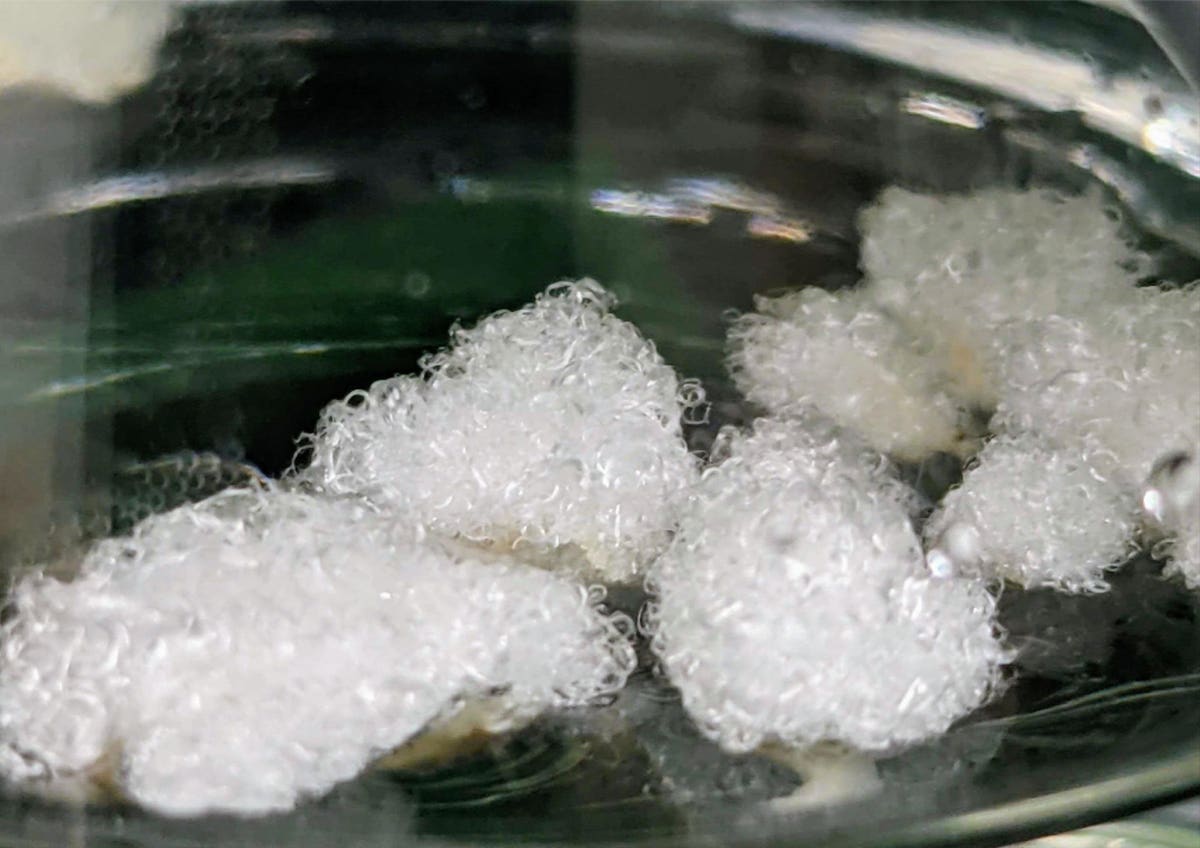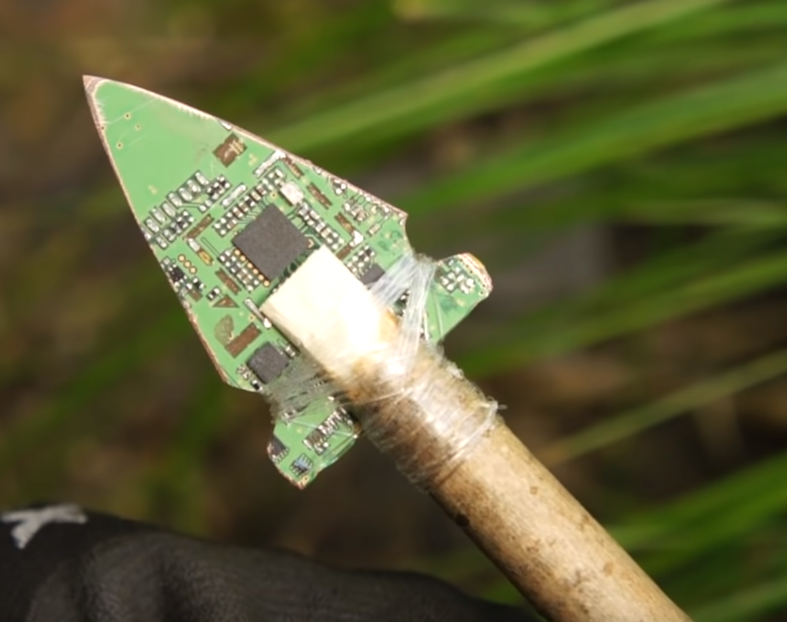- cross-posted to:
- technews@radiation.party
- cross-posted to:
- technews@radiation.party
I’m so happy we’re transitioning away from using synthetic processes to create so many inferior synthetic compounds, and transitioning towards using synthetic processes to create tried and tested compounds we’ve been using and loving for millennia.
Synthetic isn’t inherently bad just because some synthetic things are bad. Until we get more information on this thing, your snark is entirely baseless
I don’t think meant that as snark at all tbh. They’re saying they like that we’re using synthetic processes to make biodegradable, useful, and known-safe materials in a more efficient way, as compared to making the usual synthetic cotton-alternative materials that have a lot of downsides by comparison (lack of biodegradability, poor breathability, microplastic pollution, etc). I think you two actually agree probably? Lots of synthetic things are bad or flawed, and it’s nice to see this synthetic thing that is probably good.
Ah fair, apologies if I misread the tone
Common Beehaw W for good natured communications
Synthetic fibres are cool stuff, no doubt, but they also contribute to our whole microplastics problem, which isn’t that cool, to be honest.
Oh I totally agree about that, we need to move away from the ubiquitous use of plastics that don’t biodegrade in relatively short order
This article is very thin on the details. Why would anyone want to cultivate a plant in the lab that grows perfectly well in fields across multiple climate zones?
The final product is dried and harvested, with minimized water, land and energy use, Galy says.
That’s why. Cotton is notoriously bad in all of those categories. To that I would add the most cotton grown commercially is paired with a lot of pesticides as well.
From an EU briefing on textiles and the environment:
Cotton accounts for 24 % of global fibre production, according to Textile Exchange. It can be problematic because it can require huge quantities of land, water, fertilisers and pesticides and cannot easily be recycled into virgin fibre. However, the environmental impacts of organic cotton can be reduced drastically compared with conventional cotton, as it uses less water and pollutes less.
The huge quantities of land required should absolutely not be underestimated as a climate problem. If we’re going to survive this we absolutely need to give land back to nature at a massive scale, and the easiest (humanely tolerable) way of achieving this is to produce the same goods at a much lesser surface area. Lab cotton could, hopefully, be efficiently grown in a high rise building with a minimal physical footprint.
Would be interesting to see how easily vacant office space can be converted to vertical farming, since developers seem insistent that it can’t be turned into residential space for various reasons. There’s rather a lot of it in the wake of work-from-home and the AI revolution.
You could imagine a feature where cities are farms and office workers live in the country side. That’s fascinating.
Lab cotton could, hopefully, be efficiently grown
While there are not many details this is hopefully a great step toward more efficient cotton production. There are a number of possible reductions from this method (hard to know without full details though), that being lower usage of land, water, pesticides, herbicides, and shipping.
Longer term what I find exciting is the some of these lab grown systems may work well “closed loop” which mean they might work off planet at some capacity or another. That is a much longer term vision though and we have a long way to go before we master that aspect.
I guess for water getting a closed loop should be almost without challenge. I’m more interested in the potential of making life livable on earth though, at least in the short term. Still, the requirements are similar - lowered use of resources. :)
To make the Galy cotton, a team collects samples from a plant and harvests its cells. The cells are grown in bioreactor or fermentation vessels in a cell culture process similar to beer brewing. The final product is dried and harvested, with minimized water, land and energy use, Galy says.
Maybe I just misread the sentence. But the full quote seems deliberately obtuse to me. They don’t explicitly say that they need less water than traditional farming.
Cotton is one of the worst things to grow in 99% of the world yet we do it as a cash crop.
In Australia cotton farmers are turning rivers dry, and if you know Australia we don’t have much water to begin with.
the worlds fourth largest lake was almost entirely drained by cotton cultivation
I’m not up to speed on the environmental impact of cotton farming, but it would be pretty cool if this technology could be applied to stuff like the oil palm, which only grows in tropical areas.
In theory it could use far less land, water, fuel, and pesticides to achieve a similar output of a superior quality product, In theory. There’s a lot of labor resources and energy that goes into growing cotton. You could likely replace many hundreds of acres of cotton fields with a modest factory on 20 acres of land.
Cotton requires a lot of water and is considered a high risk crop with climate change. There are already failing crops, and cotton takes long enough to establish that it’s hard to adjust quickly. This is grown from cotton cells anywhere we can stand up a factory.
Cotton uses a ton of water, iirc.
Space? Mars? Something like that, maybe?
Once we grow it in a lab we can control it a lot more. Maybe genetically engineer it to have different properties.
Thank good. Now I can stop worrying about all that suffering cotton.
id worry more about how the worlds fourth-largest lake
has been almost entirely drained, and turned into a toxic desert.
because of cotton cultivation
we can make so many things from fermentation now, its unreal. We can ferment plastics now.
This is really really cool. I’m all about clean meat and other lab grown stuff that takes a massive strain off our planet.
Theres a few metrics that are the only thing that matters here, and this doesnt have any of them. Thorough comparisons of water usage, carbon footprint, and land usage. A lab has a lot of extra things that go into its impact compared to plants just growing in soil. Its a whole ass building for one. Thats a lot of impact in construction and maintenance. Thats air conditioning and plumbing for employee needs, electricity needs, roads and parking lots, all of this is water and emissions impact. Dont forget that a plant growing is itself sequestering carbon, if this is less plant material than conventional growing, thats another impact. Ive got a whirlwind of concerns for this
Growing a plant is only useful for carbon sequestration if the resulting plant matter is sequestered. I would expect that the unused stalks of cotton plants get mulched back into the soil, which releases the carbon again in short order.
Ironically, lumber construction and large landfills are good ways to sequester carbon-rich plant material.
a portion of carbon in decomposing plants gets released as CO2, but the goal of composting, even ignoring emissions, is adding carbon and other nutrients into the soil in a solid form, to feed more plants. The fact that compost piles exist and dont just evaporate into nothingness means this is a net sequestering process.
The compost is put into the soil, which doesn’t get significantly deeper over time as a result because the carbon does indeed eventually come out of it as CO2. It’s a temporary storage spot at best. There are some biomes where the carbon does get sequestered long-term, such as peat bogs, anoxic lakebeds, and the ocean floor, but generally speaking most land biomes are carbon-neutral.
it doesnt all become CO2
The soil in modern industrial farming, which is frequently tilled and treated with pesticides, is typically very barren of the microorganisms amd fungal networks that help to sequester carbon for the long term. Even if some is still sequestered despite this, it’s much worse at it than most other soil.
Farming cotton the traditional ways also requires buildings, just as a lab would, and heavy farm equipment (the use of wghich can also compact the soil to the further detriment of the microorganisms) that requires gasoline or lithium ion batteries made with cobalt from the congo.
Rural buildings and scattered land use are typically more disruptive to ecosystems than when human activity is concentrated to the smaller footpelrint of cities.
Labs can be put anywhere, whereas cotton farms are limited by space and climate to certain areas, so using labs in a variety of areas might mean much lower transporation costs and gasoline use between the cotton producer and the manfacturer that buys it.
Large scale farming also equals large scale deforestation, replacing complex ecosystems with monocultures that are routinely uprooted. This means both worse carbon sequestration and also worse stuctural cohesiveness of the soil (no roots and fungal networks holding it together), making areas more prone to landslides.
Also farms tend to pollute the groundwater all around them, and they displace native plants and thus also animals that depend on the native plants, such as the huge number of bee species that exclusively pollinate/feed from specific native plants.
Without a cotton farm, that area could potentially be a forest or natural field instead, which would be far and away better for carbon sequestration, maintaining biodiversity, and conservation.
Youre throwin out a lotta tangents there. Farming practices could be improved but this is strictly comparing between farmed cotton and lab grown. How good farmed soil is at sequestering carbon is being compared to no soil at all. Its commercial flooring over a concrete foundation. And theres not really any building required for growing cotton.
Vehicle emissions would be something to consider. Again, we dont have any metrics here, farm equipment is big because it is harvesting a lot of cotton. That brings down the emissions to cotton volume ratio, but i dont know what kind of numbers its going up against.
The rural thing sounds wrong, but its not specifically relevant anyway, a cotton farmer can live in a city, and cotton farms, for how much cotton they produce, might not be sprawling land use. Without knowing how much cotton per acreage lab grown cotton can produce, the farm might be the denser production use of land. We just use a lot of cotton. This may very well be wrong, we’re just missing anything to compare. I am a big fan of nature, but for all the problems of modern farming practices, they are still planting plants, and im gonna need a lot of convincing that a lab can produce more efficiently than a plant.
Interesting, but kind of has the ‘y tho?’ factor to it. Others note the land and water use issue vut it seems there are a lot of other crops that would be bigger targets on those fronts. Lab meats, now that I can see a big reason for, the lack of need for slaughter and the amouny of feed and space needed for beef production is massive for what we get out of it.
It’s the same issue with cotton; it takes a lot of water and land. With this, one can feasibly use less land for more product; as well as avoiding child and slave labour which has been associated with cotton production in countries with lax or non-existent labour laws.
In short: Efficiency and ethics.
At scale, there is still the risk of cotton-growing in labs being outsourced as well, similar to how a lot of cheap shit comes from factories in China with terrible conditions. That can still be an issue.
Still, there tons of potential benefits to this.
And, given how huge the demand is for cotton, and how relatively simple/cheap it probably is to produce vs lab grown meat and other things or vs the usual cotton farming methods, it’s gonna be a cash cow for the companies that make it. And for the companies that buy it at lower prices than farmes cotton, too (see also: microbial rennet having largely supplanted rennet harvested from calves, for cheese, because it’s cheaper).
It probably has to do with difficulty of cultivation. Meat is a real pain to grow in the lab, the methods are already pretty complex and production is still low. At the end of the day it’s adapted to be in an animal. On the other hand, cotton is just pure cellulose, which any number of organisms can produce including bacteria.
Mandatory mention that I didn’t read the article.
Others note the land and water use issue vut it seems there are a lot of other crops that would be bigger targets on those fronts.
It’s very likely other teams are working on other crops, and this just happens to be a high profile early success.
This is quite a bit easier to accomplish than meat (as a product people want to consume). This is genetically modified yeast that produces cotton fibers. The same thing is done to produce insulin, and many other products.
Meat is far more complex though. It’s not super difficult to grow meat, but it is in a form that resembles meat people expect and want. You can’t just grow muscle. You need to have the correct ratio of fats, and not just the correct ratio, but it should be in the meat in an expected way, not just a seperate layer on top. It’s complicated. It will be a huge benefit when it’s available, but there are probably dozens of companies already working on it.
See now there’s a factor I hadn’t really thought on. People likely wouldn’t even know the difference with this, though you’ll probabbly end up with some ‘expert’ class that claims natural grow is superior in some way or another. Food has the aspects of presentation texture amd taste to contend with. I wonder if the way in for lab meats might actually be through fast food and the like. Nobody is ever going to McDonalds and praising the wonderful texture and balance of their burgers and nuggets, it’s just something to eat. Get people accustomed to it that way and let it grow from there.
Not just land and water use, but there may be market reasons, as well as reasons relating to consistency and application specific variations, too.
A bad grow season means lowered supply, higher global cotton prices, etc. Natural farming means lots of supply at harvest, money spent on storage and dwindling supply during the off seasons. There’s often transport costs (usually), and there’s always cleaning and deseeding, too.
On the environment front, while polyester and other plastic-based fibers have their uses, they are often used instead of cotton due to cost. Consumers are becoming more aware of micro plastics, and may start changing buying habits as a result. It’s also possible that governments may start to regulate artificial fibers, too.
Technology-wise, it may be possible to tweak the fibers for specific use cases. It may even be possible to grow colored fibers, or fibers with enhanced strength.
A lab-grown option, especially if at scale, can mean a constant supply of fibers near looms that are customizable, need less post-processing, and are more appealing to consumers.
Cotton on the roadside, cotton in the ditch. We all picked the cotton but we never got rich. Daddy was a veteran, a southern democrat. They oughta get a rich man to vote like that.
















